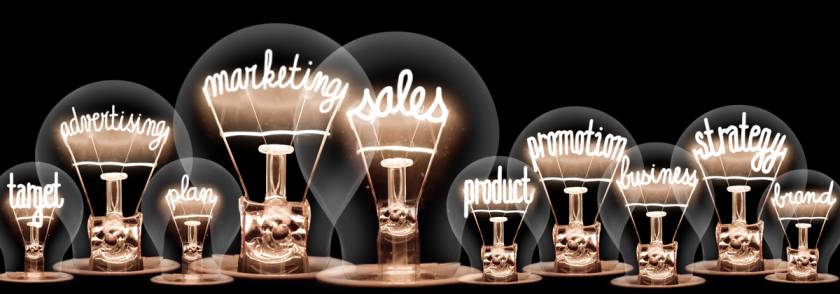8 Strategies to Optimize Catalogues for Your E-Commerce Platform!


Going digital with your business is an indisputable business strategy. E-commerce sites’ ability to reach more customers round the clock has made it crucial to business strategies. If you want to go global then e-commerce is the surest and cheapest way to go. But studies have found that the rate of return is more in online purchasing than in brick and mortar stores. Does that sound discouraging to you?
Well if this paints e-commerce in a negative light for you, you need to consider what drives the high return rates, and what can be the potential solution. Understandably, it is difficult to judge a product by its pictures, but you can certainly have a control on the error rates by presenting the most realistic pictures of the products - we mean use great cameras, multiple angles, and dig deep into the details in your product description.
Appropriate cataloguing your product is one of the first things you need to take care of. Product Catalogue Management is necessary because the customer will rely on your website flow to navigate through the items. Poor catalogue quality impacts both the sellers and the customers. Consumers are either misled or duped into buying the wrong product and this in turn harms the brand in several ways. Like, the customer may put up a bad review on social media or lose interest in your brand forever. A high-quality digital catalogue that serves the customers in the best possible way is a certain path to earn customer loyalty.
8 Steps to Build a Perfect Catalogue

1. Put up standardized images for maximum accuracy
Avoiding misrepresentation is the first step towards building a good catalogue. Put up clear and detailed images that people can comprehend without a hitch. Blurred images or improper angles discourage purchases. Consumers will soon assume the lack of good and clear images to be reflective of the poor quality of the product. You need to ensure that the images have optimum size, good angles, and vivid colorization. You can consider the demographics or the niche cultures of the target market while styling the photographs.
2. Well defined categories for smart navigation
While shopping online, consumers want an easy laidback experience above all. The very reason they want to shop online is because they want to do it as comfortably as possible. Your website needs to have well-segmented categories that offer easy navigation combined with intuitive suggestions. The categorising should be simple and logically sequenced. This is a qualitative experience that the customers won’t forget. They will either come back to the same space for the ease you provide, or never turn back because the clutter left them traumatized.

3. Enrich the experience
The customer experience is not merely limited to navigation. Consider what more you can do to offer a differentiated experience - something extraordinary that makes consumers choose your website over the others. There are features that you can include to boost the customer experience. After you have established the basics, move on to features like multilingual text, price comparison, added links about the products, and so on. You can further add downloadable features, single and double-page layout options, shareable on social media features to make the shopping experience more fun and engaging.
4. Remove duplicate content
The idea behind adding duplicate content while selling is to expand the sales, which by the way, is a totally wrong approach. It affects your SEO ranking and reduces the traffic from search engines. It also affects the customer’s decision-making capacity. The customers may get confused if they’re presented with way too many look-alikes, ultimately leaving the site without making the purchase. Catalogue your products in a defined category and reduce any unnecessary comparison through pop-ups. Moderation is the key.
5. Use rich media integration
Rich media aka videos and slideshows. Use elegant and straightforward media - like an animation that is fun and entertaining - to grab the attention of the shoppers. Adding rich media immediately engages customer’s interest and sustains their enthusiasm about your product. Make sure they are shareable, so that you get to enjoy exposure to a wider audience. Also, keep the media content short so that people don’t feel the urge to abandon it midway.
6. Clear ‘Call to Action’

Clear CTA includes a strategic placement of buttons and icons like interactive forms, think of ‘add-to-cart' or ‘wishlist’ buttons. It is highly recommended that you include ‘add-to-cart’ and ‘wishlist’ options in every page so that the customers don’t have to navigate back and forth. Avoid gaudy layouts and designs, go for realistic ones instead. Get rid of all exaggerations and cliched marketing content to keep it simple and to the point.
7. Use clear language
Lesser complications speed up the shopping process. Your customers must be able to understand your message after just one read. This means your language needs to be simple and clear, nothing should prompt any of them to fetch a dictionary or google a word. The writings should suit any person with a short attention span. Use subheadings to lead their navigation to their target queries. Avoid flowery language, cliches and repetitions. Any kind of ambiguity is unacceptable.
8. Use relevant descriptions
The magic often lies in the details. Use your product description as a vital tool to convince your customers to buy the item. Besides the physical description of the product, the potential experience of using the product may be added. However, be careful that you don’t egg on your consumers to drown in an ocean of words. The descriptions need to be precise, including only the key points. The description must match the product image at all times.



















